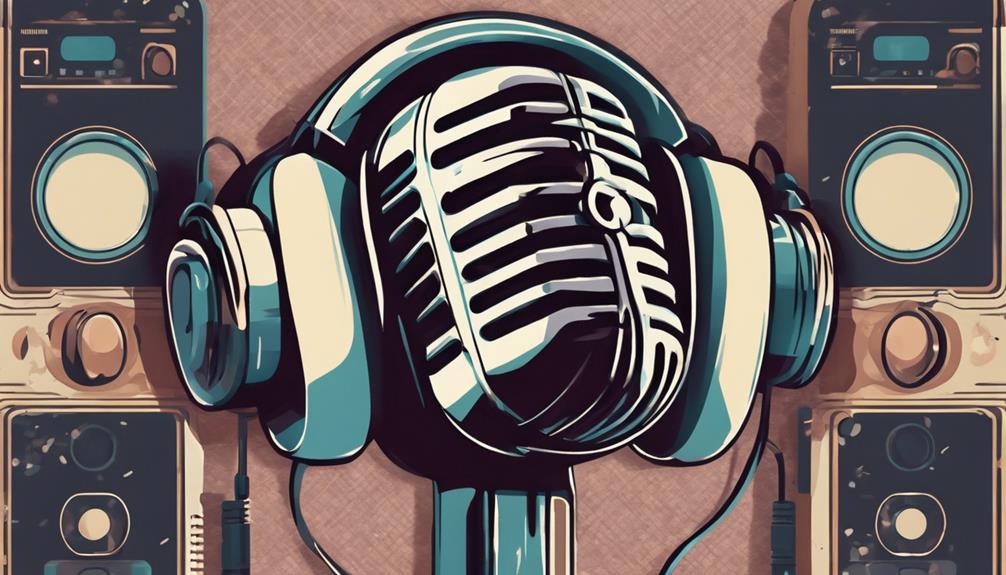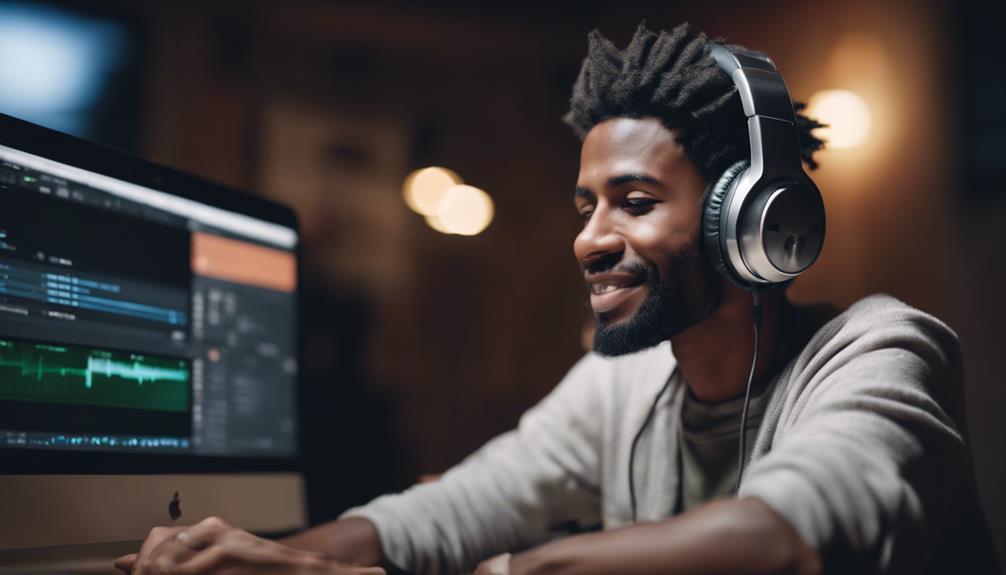When looking for the best podcasting microphones, consider these top 7 picks: Rode PodMic with exceptional sound quality, JLab Talk for versatile patterns, Blue Yeti's affordability and quality, Logitech for Creators X's upgraded controls, Elgato Wave: 3 for clear recordings, Movo UM700 for hassle-free use, and HyperX QuadCast S combining style and functionality. Each microphone offers unique features catering to various needs. From durability to versatility in directional patterns, these options provide high-quality sound for podcasters and content creators. Further details on these top picks can uncover the ideal microphone for your podcasting endeavors.
Key Takeaways
- Rode PodMic: Exceptional sound quality with a cardioid pattern and XLR connection for professional audio.
- Blue Yeti: Versatile USB mic with four polar patterns for various recording needs at an affordable price.
- Elgato Wave: 3: Clear cardioid recording with customizable lighting, user-friendly controls, and compact design.
- Movo UM700: Reliable USB mic with a desktop stand for hassle-free setup and excellent sound performance.
- HyperX QuadCast S: Stylish mic with customizable lighting, four directional patterns, and built-in shock mount for professional quality.
Rode PodMic
The Rode PodMic delivers exceptional sound quality and durability, making it a top choice for podcasters seeking professional audio performance. This condenser microphone features a cardioid audio pattern, ensuring that it captures sound from the front while minimizing background noise.
Its 3-pin XLR connection enables seamless integration into your setup, guaranteeing professional audio quality for your podcasts. Users appreciate the fantastic sound quality produced by the Rode PodMic, attributing it to its high build construction and internal pop filter that reduces plosive sounds during recordings.
Despite its compact size of 6.8 x 4.3 x 2.4 inches, this microphone packs a punch when it comes to performance. Additionally, the Rode PodMic offers a low price point, making it an attractive option for podcasters looking to enhance their audio without breaking the bank.
With its combination of quality sound output, sturdy build, and affordability, the Rode PodMic stands out as a reliable choice for podcasting needs.
JLab Talk
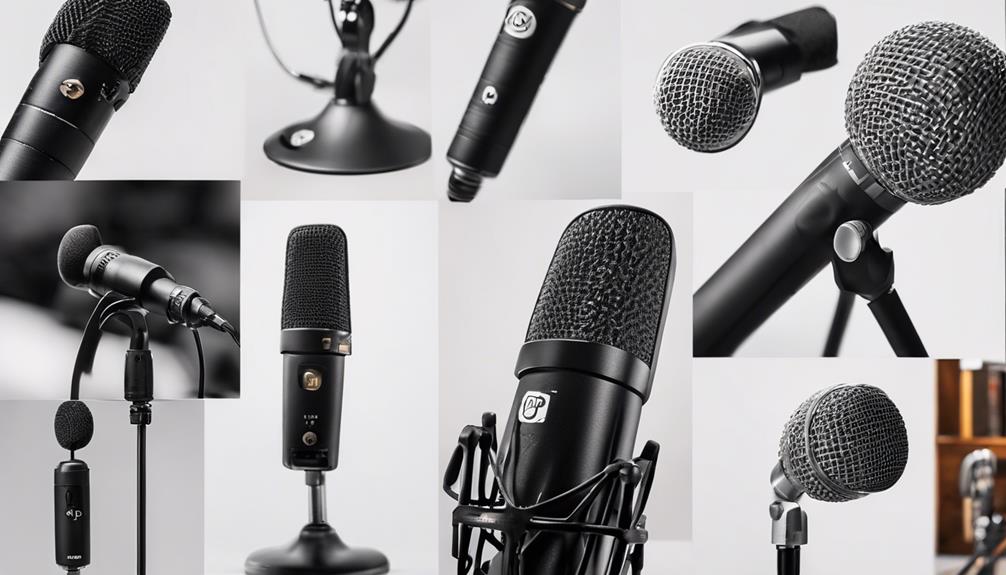
The JLab Talk microphone stands out for its versatile directional patterns, including bidirectional, cardioid, omnidirectional, and stereo options.
This USB microphone impresses with its high sound quality, making it a top choice for podcasting and content creation.
However, some users have expressed concerns about potential background noise pickup and an imbalanced bidirectional mode on this microphone.
Sound Quality Comparison
When comparing sound quality of the JLab Talk microphone, we find four directional patterns available for peak performance. This USB microphone offers cardioid, omnidirectional, bidirectional, and stereo modes, ideal for podcasting and content creation.
The JLab Talk excels in delivering high sound quality, ensuring professional results for your recordings. However, users should be mindful of potential background noise pickup, which can affect the overall audio clarity.
While the bidirectional mode may sometimes show slight imbalance in sound capture, the microphone's versatility and performance capabilities make it a solid choice for podcasters looking to elevate their audio quality.
With easy USB connectivity and a range of directional options, the JLab Talk microphone is a reliable tool for creating excellent podcast content.
Design and Features
Comparing sound quality in the JLab Talk microphone, we're now going to explore its design and features.
This USB microphone boasts four directional patterns – bidirectional, cardioid, omnidirectional, and stereo – catering to various podcasting needs. With dimensions of 9.9 x 7.6 x 7.6 inches, it offers easy setup and usability. Renowned for its superior sound quality, the JLab Talk microphone is a top choice for content creation.
However, users should be mindful of potential background noise pickup, especially in noisy environments. While the bidirectional mode may need some tweaking for balance, overall, this microphone excels in providing crisp audio for podcasts and other creative endeavors.
Blue Yeti
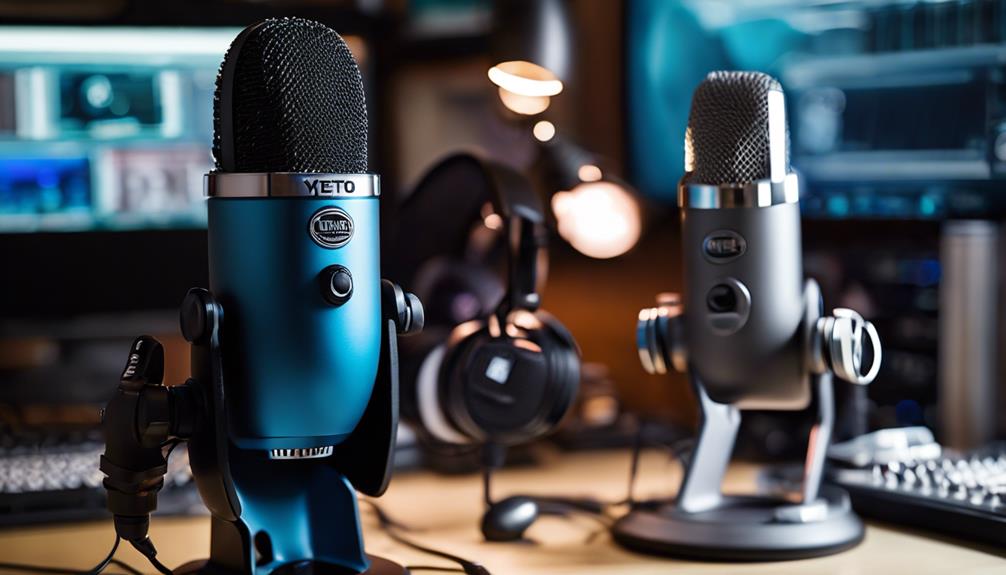
Let's explore the versatile capabilities of the Blue Yeti microphone, renowned for its four polar pattern options and exceptional sound quality. The Blue Yeti is a USB microphone that's perfect for podcasting, recording, and various other audio needs.
Here are some key points about this innovative microphone:
- The Blue Yeti offers four polar pattern options (cardioid, bidirectional, omnidirectional, and stereo) for versatile recording possibilities.
- With its plug-and-play USB connectivity, the Blue Yeti is extremely user-friendly, making it ideal for quick and easy setup.
- Known for its high sound quality, the Blue Yeti is a top choice among content creators looking to capture clear and professional audio without breaking the bank.
The Blue Yeti's affordability, combined with its exceptional recording capabilities, makes it a popular choice for both beginner and experienced podcasters seeking a reliable and versatile microphone option.
Logitech for Creators X
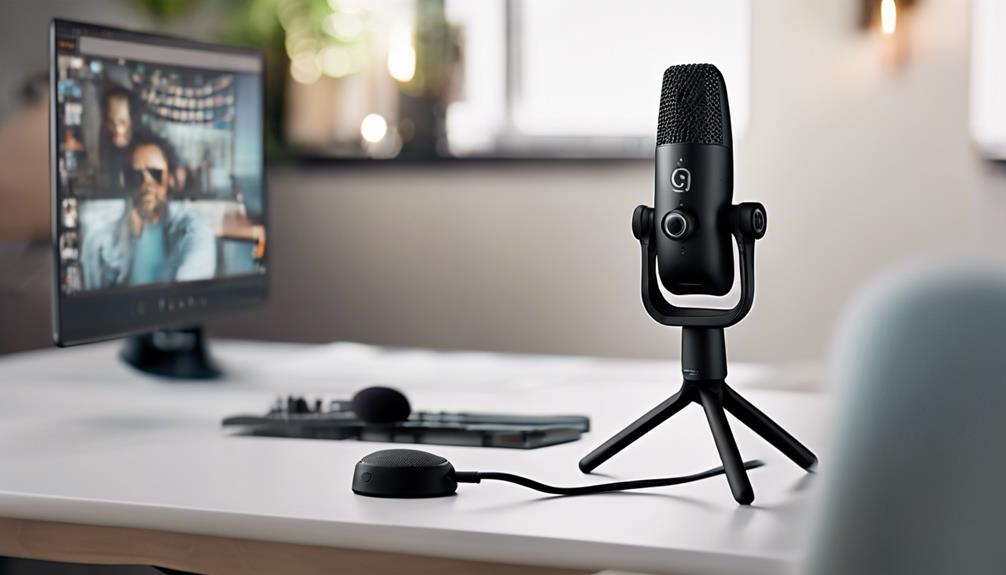
The Logitech for Creators X microphone guarantees upgraded controls and exceptional sound quality, making it a preferred choice for podcasters and content creators alike. With versatile bidirectional, cardioid, omnidirectional, and stereo audio patterns, this USB microphone offers a range of recording options to suit various needs. Its plug-and-play functionality guarantees easy setup, ideal for those looking for a hassle-free experience.
While the Logitech for Creators X comes at a higher cost compared to standard models, its professional-grade performance justifies the investment for podcasters seeking top-tier audio recording capabilities. Whether you're conducting interviews, recording solo episodes, or capturing group discussions, the Logitech for Creators X delivers clear and crisp sound reproduction.
For creators who prioritize high-quality audio output in their podcasts, this microphone is a reliable and innovative choice that won't disappoint.
Elgato Wave: 3
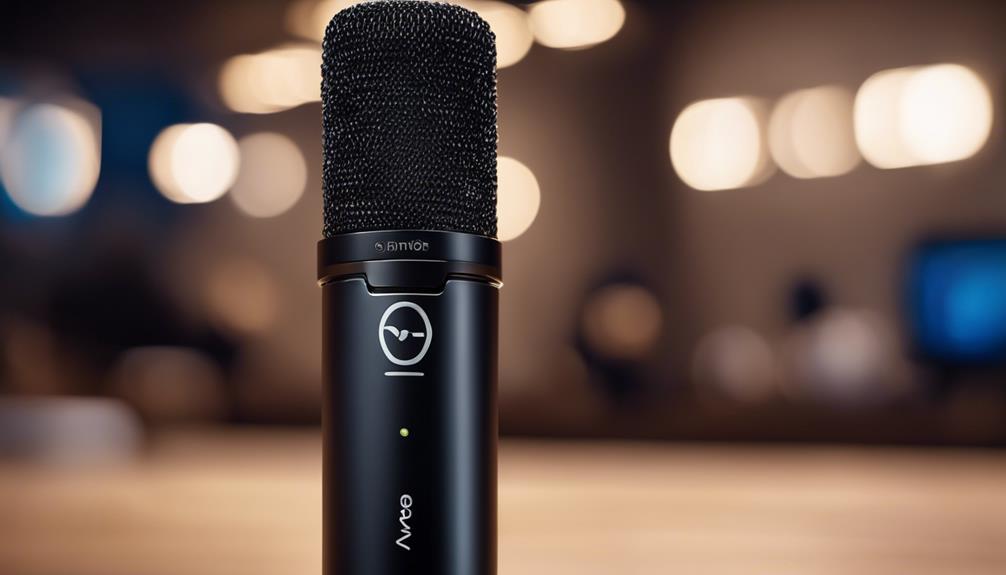
The Elgato Wave: 3 stands out for its clear cardioid recording and customizable lighting options, making it a top choice for podcasters looking for both performance and style.
When comparing its features and performance to other microphones, the Wave: 3 excels in providing a user-friendly experience with built-in enhancements like a shock mount and pop filter.
Its intuitive setup and sleek design further enhance its appeal, offering podcasters a reliable and high-quality recording solution.
Wave: 3 Features
Discussing the Wave: 3 features of the Elgato Wave: 3 microphone, we find a compact and portable device with a cardioid pickup pattern for focused recording.
The Elgato Wave: 3 stands out with its USB connectivity, allowing for easy setup without extra gear. Its onboard controls simplify adjustments, enhancing the user experience.
This microphone is designed for professional podcasting, providing clear recordings with its cardioid pickup pattern.
- USB Connectivity: Easy setup without additional equipment.
- Onboard Controls: Simplifies adjustments for better user experience.
- Professional Podcasting: Designed to deliver clear recordings for professional use.
Performance Comparison
Comparing the performance of the Elgato Wave: 3 microphone with other podcasting mics highlights its strengths in clarity and portability. This condenser mic, featuring a cardioid audio pattern, guarantees clear recordings, perfect for podcasting.
Its compact size of 6.0 x 2.6 x 1.6 inches makes it highly portable, catering to on-the-go podcasters. With USB connectivity, the Wave: 3 offers a seamless plug-and-play experience, ideal for quick setup. Users appreciate its intuitive setup and clean design, enhancing usability.
While it excels in capturing clear cardioid audio, some users have mentioned potential background noise pickup as a drawback. Overall, the Elgato Wave: 3 stands out for its performance, particularly in terms of clarity and convenience for podcasters seeking a reliable USB microphone.
Movo UM700
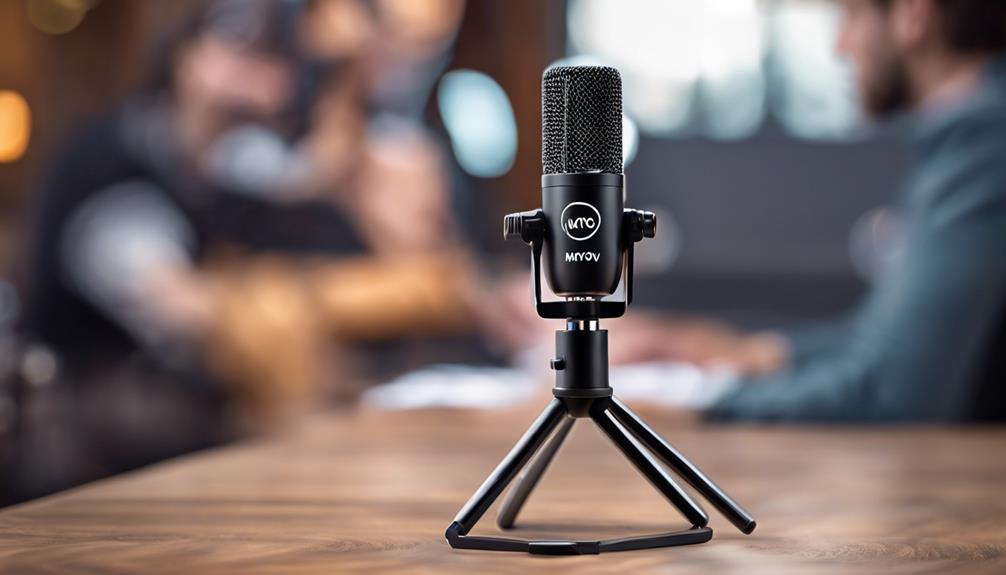
When considering podcasting microphones, one may find the Movo UM700 to be a versatile and user-friendly choice. This USB condenser microphone is ideal for podcasting and streaming, offering a cardioid polar pattern for focused sound capture and noise reduction. Here are three key features that make the Movo UM700 stand out:
- Plug-and-play functionality: Setting up this microphone is a breeze, making it perfect for beginners or those who value convenience.
- Clear audio quality: With a frequency response of 20Hz to 20kHz, the Movo UM700 delivers detailed and crisp audio for professional-sounding recordings.
- Convenient connectivity: The microphone comes with a desktop stand and a USB cable, ensuring easy and hassle-free connectivity to your recording setup.
For those looking for a reliable and high-quality microphone that offers excellent sound performance and ease of use, the Movo UM700 is definitely worth considering.
HyperX QuadCast S
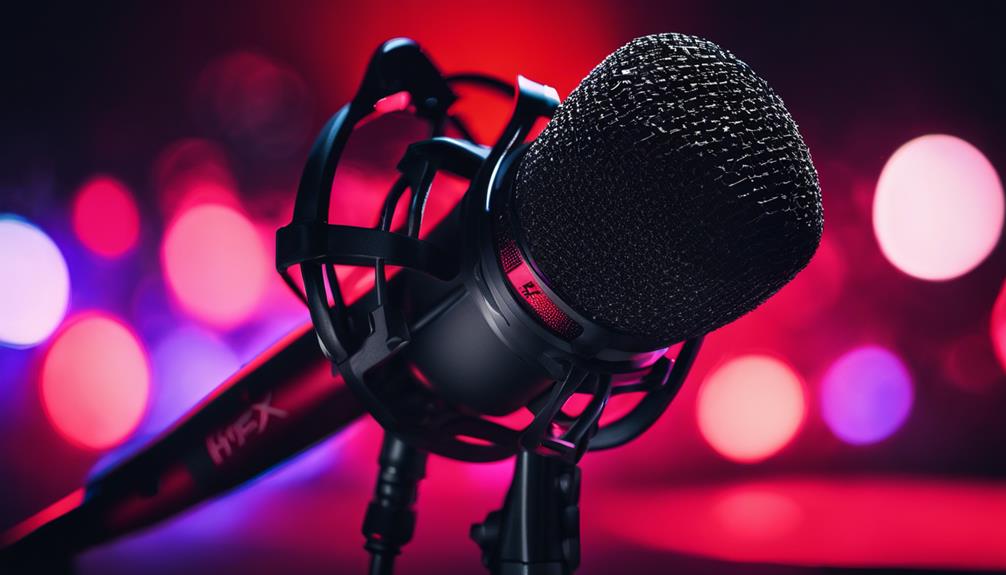
In investigating the HyperX QuadCast S, we explore its customizable lighting options and versatile recording capabilities. This condenser microphone offers four directional patterns – bidirectional, cardioid, omnidirectional, and stereo – catering to the diverse needs of podcasters, streamers, and content creators.
The built-in shock mount and pop filter guarantee that your audio recordings are crisp and professional. With USB connectivity, setting up this microphone is a breeze, making it ideal for those seeking convenience without compromising on quality.
The compact 10 x 5 x 5-inch design of the HyperX QuadCast S allows for easy integration into various recording environments, perfect for those with limited space. Whether you're creating podcasts, streaming content, or engaging with your audience, the enhanced features of this microphone elevate your audio production to the next level.
If you're looking for a microphone that combines functionality with style, the HyperX QuadCast S is a top choice for modern content creators.
Frequently Asked Questions
What Microphone Do Most Podcasters Use?
Most podcasters lean towards the Shure SM7B for its exceptional audio quality and versatility. It's a solid choice that provides professional-grade sound for various recording needs.
The Blue Yeti microphone is another popular option due to its user-friendly design and widespread recognition in the podcasting community.
Audio-Technica's AT2020USB is also favored by many podcasters for its affordability and quality speech recording capabilities.
What Mic Does Joe Rogan Use?
We use the Shure SM7B microphone for our podcasting needs. It offers professional-grade audio quality and versatility in various recording setups.
With its cardioid polar pattern, it excels in capturing focused sound and minimizing background noise. The Shure SM7B is a go-to choice for podcasters and broadcasters alike, known for its reliability and crystal-clear sound.
Joe Rogan's endorsement of this microphone has solidified its reputation as a top choice in the industry.
What Is the Podcast Mic Everyone Uses?
We've noticed that the Shure MV7 USB/XLR mic is a top choice among podcasters due to its versatile connectivity options and professional audio quality.
Blue Microphone Yeti is another popular option known for its ease of use and affordability, especially favored by YouTubers and streamers.
These mics cater to different needs, so it's worth exploring both to see which fits your podcasting style best.
How Do I Choose a Microphone for Podcasting?
When choosing a microphone for podcasting, we consider factors like recording environment, number of voices, and noise levels. Evaluating pickup patterns and aligning with budget and setup are key.
Look for features like loopback functionality for versatile audio routing. The chosen microphone should enhance professionalism, capture voice accurately, and translate sound effectively.
Make sure it aligns with your content creation goals to bring out the best in your podcasting experience.
Conclusion
To sum up, selecting the right podcasting microphone can have a significant impact on the quality of your recordings.
With choices ranging from the budget-friendly JLab Talk to the high-end Rode PodMic, there's a microphone for every podcaster.
For instance, Sarah decided to upgrade to the Blue Yeti and immediately noticed a marked improvement in the clarity of sound on her podcast.
Take into account your requirements and budget when choosing a microphone to enhance your podcasting experience.



